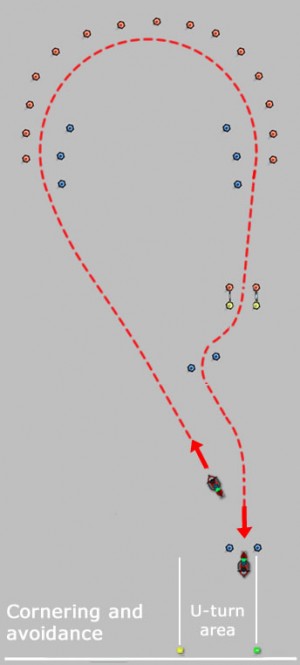Motorcycle Mod 1 Hazard Avoidance
After completing the module 1 motorcycle cornering and emergency stop, you’ll be required to demonstrate to the examiner the final exercise, the hazard avoidance.
The hazard avoidance exercise can controversially be regarded by some as a hazard in its own right due to the swerve and speed involved. It’s therefore best to gain a good deal of practice before taking the module 1 test.
As with the emergency stop, a minimum speed is required for the avoidance test of at least 50 km/h, which is around 32 mph and as with any module 1 test, this can be completed on either a right or left-hand circuit.
To perform the hazard avoidance successfully, you’ll be required to reach a minimum speed as detailed above whilst passing through speed measuring equipment, or a speed detection device used by the examiner. Once up to speed, you’ll be required to steer to avoid stationary obstacles and to come to a controlled stop in a designated area.
You will be informed by the examiner what you need to do, where you need to go and where to finish before the exercise commences.
What the Examiner is Looking For
You’ll be following a very similar route to the controlled stop and emergency stop. Remember to always perform safety observation checks before moving off.

Moving off, a similar speed to the emergency stop should be obtained and again moving up into 2nd gear should be sufficient.
Round the corner between the blue and red cones at a speed of around 30 km/h (19 mph). Upon exiting the corner, accelerate up to the required speed of 50 km/h (32 mph).
During the hazard avoidance section where you are changing direction, do not use the front brake as this potentially can lead to a loss of control.
Finish the hazard avoidance exercise by riding between the two blue cones at the end of the course. You must finish by riding between the cones but how far past the cones you wish to travel is your choice. If the course is wet for example, you may intend on taking greater time to slow down than you would on a dry course. You will however be required to reach the minimum speed regardless of weather and course conditions.
Providing you have met the minimum speed requirements, you have not knocked any cones over and you have stopped under full control between the cones at the end of the exercise, this exercise will be complete.
Things to Remember
- Perform safety checks before moving off from the hazard avoidance exercise
- Ensure you meet the minimum speed required
- Steer accurately and avoid hitting any cones
- Do not use the front brake whilst changing direction
- Stop between to marker cones at the end of the exercise
- Stop under control avoiding locking wheels